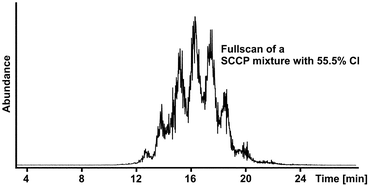Multivariate cluster analysis as a versatile tool for the quality assessment of short chain chloroparaffin quantification in environmental samples
Abstract
The compositions of commercially available solutions of short chain chlorinated paraffins (SCCP) and technical mixtures were determined by high resolution


 Please wait while we load your content...
Please wait while we load your content...